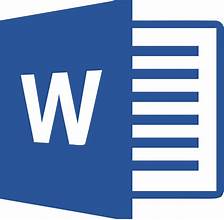THE ANALYSIS OF ENGLISH LECTURERS’ CLASSROOM-BASED READING ASSESSMENTS TO IMPROVE STUDENTS’ READING COMPREHENSION
DOI:
https://doi.org/10.22460/eltin.v5i1.p35-44Abstract
The objectives of this research are to identify techniques that the lecturers use in assessing reading
comprehension and to find the way English lecturers construct classroom-based reading assessments.
Three English lecturers were selected as the respondents of this research. The data were obtained
through classroom observation and interview. Then, they were analyzed and reported descriptively.
The results of this research revealed that in assessing reading comprehension all respondents used
various techniques such as short answer question, matching test, multiple choice and observation
(teacher made method) and summary and retelling (students conducted method). In addition, they used
the different sources in designing assessment instruments. The sources were taken not only from
textbook but also from internet, journals and other textbooks.
Keywords: English lecturers, Classroom-Based Reading Assessments, Reading Comprehension
References
F. REFERENCES
Alderson, J. Charles. (2000). Assessing Reading. Australia: Cambridge University Press.
Brown, A. L., Campione, J. C. & Day, J. D. (1981). Learning to Learn: on Training Students
to Learn From Texts. Educational Researcher, 10(2).
Brown, H. Douglas. 2001. Teaching by Principle: An Interactive Approach to Language
Pedagogy (Second Edition). NewYork: Pearson Education Company.
Carson, J. G. (1993). Reading for writing: Cognitive perspectives. In Carson, J. G., & Leki, I.
(Eds.), Reading in the composition classroom: Second language perspectives.
Boston: Heinle and Heinle Publishers.
Cohen, D. Andrew. (1996). Assessing Language Ability in the Classroom. 2nd Edition.
U.S.A:
Heinle & Heinle Publisher
Cheng, Rogers and Hu. (2004). ESL/EFL Instructors’ Classroom Assessment Practice:
Purposes, Methods, Procedures. Queen’s University and University of Alberta.
Available online: http://ltj.sagepub.com
Darling-Hammond, L., & Goodwin, L. (1993). Progress Toward Professionalism In
Teaching.
In G. Kawelti (Ed.), Challenges and achievements of American education (pp. 19–
. Alexandria, VA: Association for Supervision and Curriculum Development.
Dawson, C. (2009). Introduction to Research Methods. Oxford: How to Books.
Defianty. (2007). Language Assessment fr Young Learner. Paper Presented atthe 55th
TEFLIN
International Conference. Jakarta: UIN Syarif Hidayatullah
GarcÃa, G. E., & Pearson, P. D. (1994). Assessment and Diversity. Review of Research in
Education, 20, 337–392.
Gottlieb. (2006). Assessing English Language Learner: Bridge from Language Proficiency to
Academic Achievement. California: Corwin Press.
Grabe, W. (2002). Second Language Reading. In: The Oxford Handbook of Applied
Linguistics. Kaplan, R.B. (ed.). OxfordUniversity Press, Oxford, p. 49-59.
Harmer, J. (2001). The Practice of English Language Teaching. England: Longman.
Harmer, J. (2007). How to Teach English. Essex, UK: Pearson-Longman.
Harris, T. L., & Hodges, R. E. (1995). The Literacy Dictionary: The Vocabulary of
Reading and Writing. Newark, DE: International Reading Association.
Heaton, J. B. 1991. Writing English Language Tests. New York: Longman.
Klingner. 2004. Assessing Reading Comprehension. Available on line:http//aei.sagepub.com
/cgi /content/abstract/29/4/59//.
Oller, J.R.. (1986). Language Tests in School. London : Longman.
McNeil, J. D. (1992). Reading Comprehension New Directions for Classroom Practice (3
rd
ed.). Los Angeles, CA: University of California.





